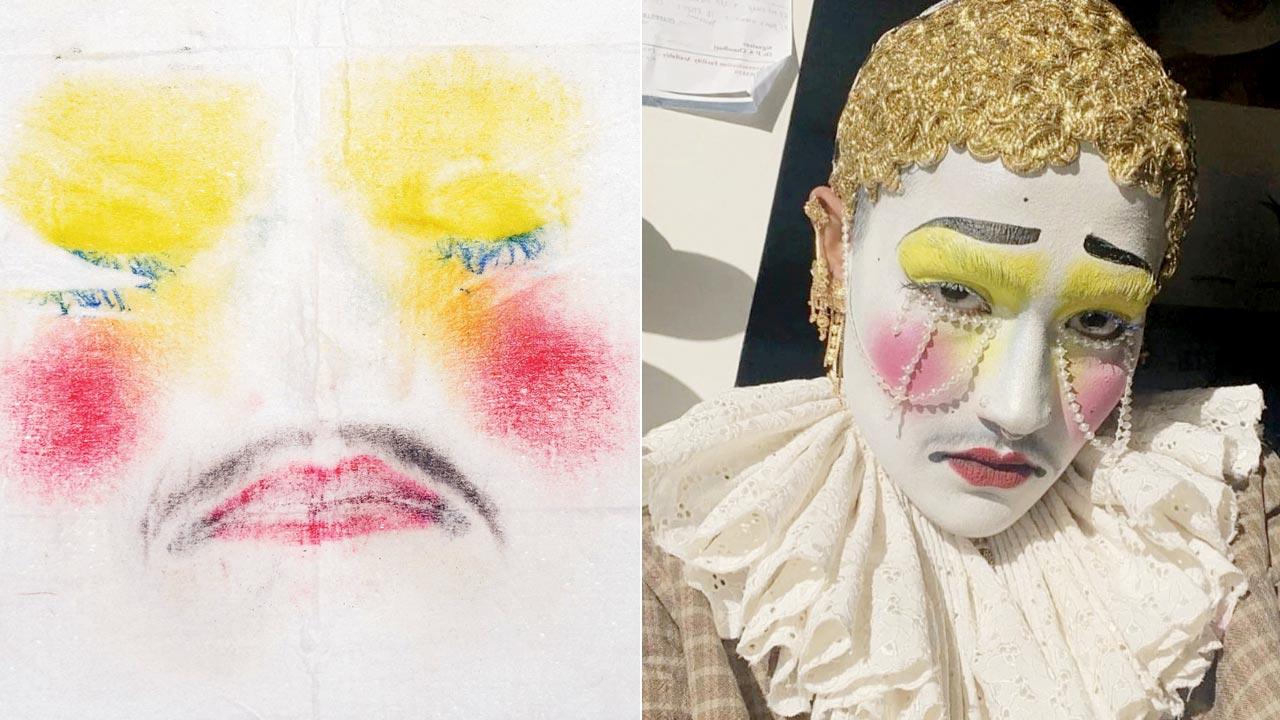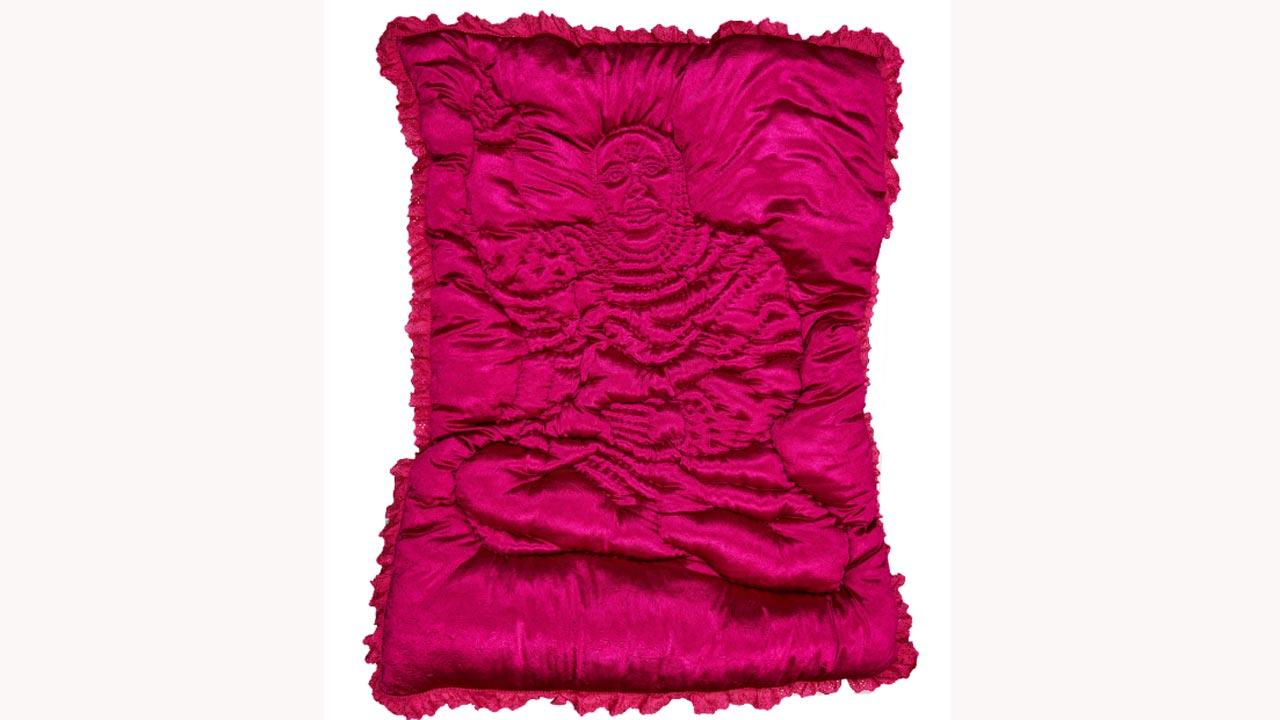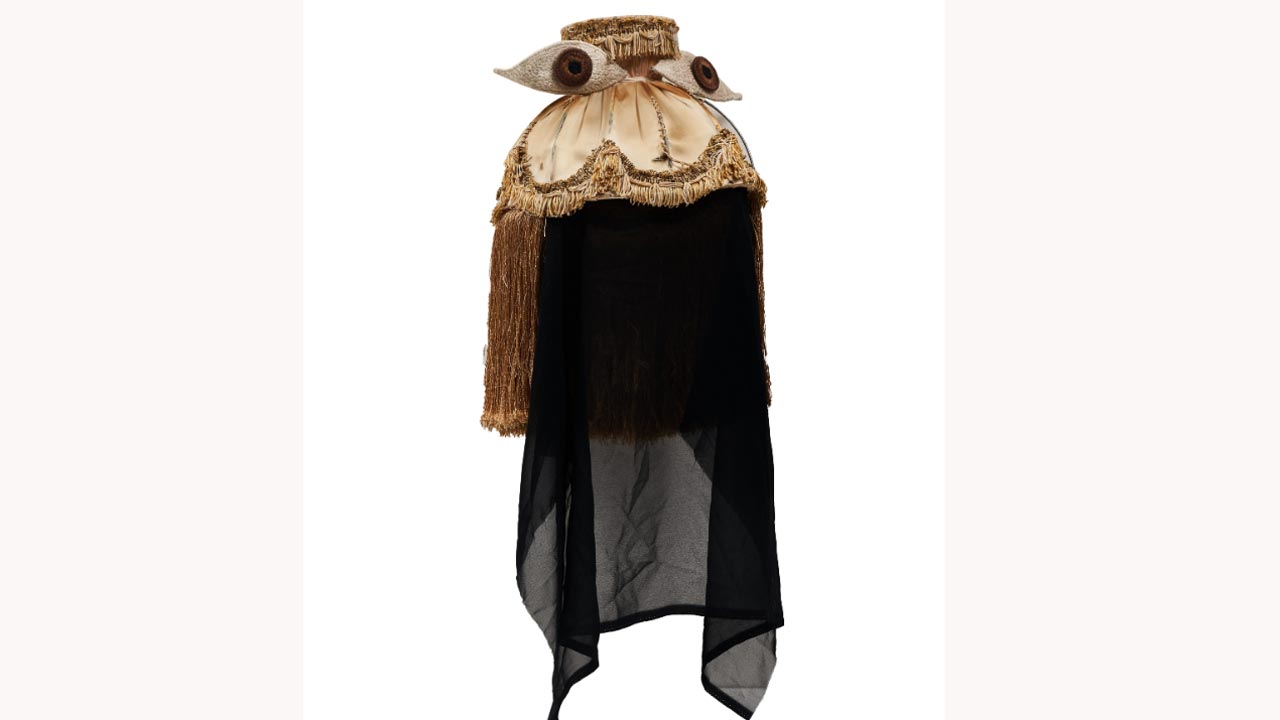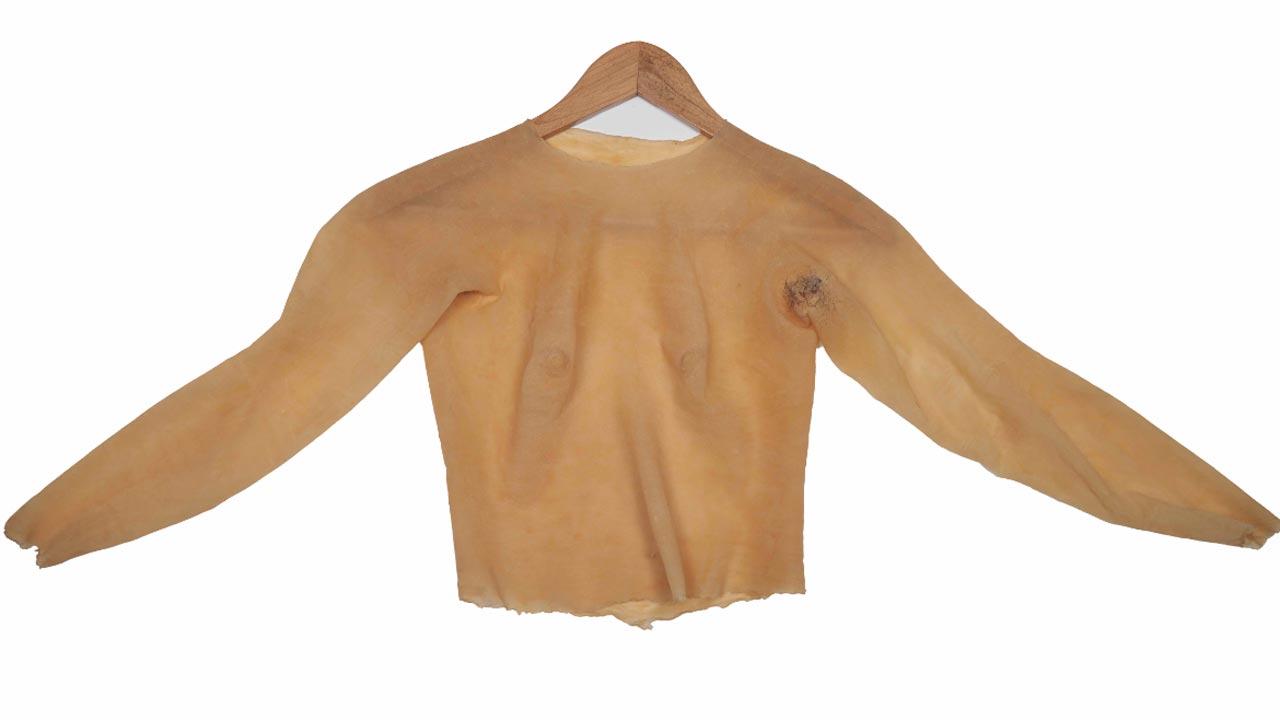Sarah Naqvi interweaves the trans-queer existence with the rapidly changing socio-political landscape, finding comfort in the tenderness of family, care and healing

Artist Sarah Naqvi’s (they/them) work engages in narratives themed around religious and societal polarisation, centering art and their tool for activism. Their first solo show is on view at Tarq, Colaba
 It is is a latex bodycast (2020), not an opinion piece, and yet somehow the subdued Sarah Naqvi latex costume—with the artist’s own nipple indents and armpit hair—questions the very nature of resistance for a queer person whose existence is a continuous act of defiance against
It is is a latex bodycast (2020), not an opinion piece, and yet somehow the subdued Sarah Naqvi latex costume—with the artist’s own nipple indents and armpit hair—questions the very nature of resistance for a queer person whose existence is a continuous act of defiance against
normativity.
The bodycast is part of the larger ensemble cast created in 2020, including Aatein, a textile, wood and glass puppet; the Um-me-Leila, an embroidery and textile lampshade; the Arawelo, textile, silicone and paint; and a felt costume with wood carved hands and quilted head called Untitled.
 Face Impression (2022) is an impression on a makeup wipe of Sarah Naqvi’s makeup applied for a drag performance where they played a role that satirised a privileged, old white man unhappy with the current state of the world
Face Impression (2022) is an impression on a makeup wipe of Sarah Naqvi’s makeup applied for a drag performance where they played a role that satirised a privileged, old white man unhappy with the current state of the world
The artist calls them “props” which were part of a collaborative film, How Does One Say Queen in Islam. “I created them based on different but important mythical figures in Islamic history. I worked on different materials and objects depending on availability; it’s important for me to use found and discarded materials,” Naqvi explains via video call from their Mumbai home.
The artist has roots in Aligarh, but grew up in the suburbs of Mumbai, which they call home. Dressed in an oversized black shirt in orange-red painterly print, their shorn haircut pretty much frames the focus on the neck tattoo—inspired by Kasuti folk embroidery— flanked by two storks kissing, and two tiger claws. Nose studs, and delicate nose rings hanging between their nostrils establish a seamless dialogue with traditional Maharashtrian multi-drop ear ornaments.

Blanket of Solidarity, quilt on satin
There are few young artists as materially and conceptually inventive as Naqvi, 26, who is non-binary and uses they/them pronouns. Their first solo show titled, how many songs from a single note? (currently on view at Tarq, Colaba, till November 19), is conceptualised by the artist with curatorial advisor Shaunak Mahbubani. “Shaunak came up with the title, which I think represents my visual language and how I keep working on the same topics relentlessly, and like to include poetics in my work. I find humour and catharsis in writing songs and singing,” Naqvi adds.
Like the artist’s notes on poems, the 25 works on display juxtapose multivalence of seemingly unalike materials like gastronomical essays, textiles, drawings, paintings, sculptures and performance videos to create talismanic resonance and strength. They speak to issues of identity-based injustice in the current socio-political landscape, juxtaposing dissent with tenderness of family, care and healing seen in the domestic layout of the exhibition.
 Um-me-Leila, embroidery and textile lampshade
Um-me-Leila, embroidery and textile lampshade
For instance, the Blanket of Solidarity (2020) is a quilt in satin, handmade by Naqvi during the anti-CAA (The Citizenship Amendment Act) and NRC (National Register of Citizens) protests that rocked India in 2019-2020. “It’s a work that’s close to me, and also has a very important hold over our understanding of who Muslim women are, and what they can do; how they provide for us, fight for us and on behalf of us without expecting acknowledgment.”
The blanket holds emotional narratives, hiding metaphors of warmth and comfort during cold, dark winters between its folds. “That’s what Muslim women signify for me.”
 Untitled, latex bodycast, human hair
Untitled, latex bodycast, human hair
The quilt of dissent from Shaheen Bagh, a Delhi neighbourhood which became the hub of resistance during the nationwide anti CAA/NRC protests, is derived from an image of one of the female protestors photographed by Ali Monis Naqvi. This work ultimately connects the political with the personal. Naqvi stitched the blanket during their residency programme at De Ateliers in Amsterdam. “It was a part-public performance, with friends bringing me tea and spending time with me while I worked on the blanket,” they say.
Naqvi’s art is more than the object itself. It addresses the enduring nature of human interconnectedness; it touches on its participation and community aspect. It celebrates queerness, both explicit and tacit. Naqvi presents a kaleidoscope of the myriad ways in which sexuality and gender can be experienced and expressed. “But I don’t think I have to constantly address my queerness. The mere existence of trans bodies is political and poignant,” they explain. “I am who I am, and that in itself is an assertion of my identity.”
Naqvi’s relationship with materials is rooted in their adolescence of “an art-inclined child who dabbled with paints and pencils, while also destroying and making things”. “Because I didn’t come from a background where people pursued art, I was directed toward textiles, and NID [National Institute of Design].”
Although they didn’t pursue textiles in a traditional sense, NID’s rigorous way of working with material taught them patience and commitment to tactile materials. “You really have to pursue tactile materials with love and kindness. Textiles have incredible history, meaning and depth attached to them and there’s always something new to discover which works for the stories I want to tell,” Naqvi says.
They agree that textiles, like art, have been governed by that tyrannical poltergeist—the binary. “There is always this idea of the gendered medium ingrained by men regarding what feminine or masculine art is… but that’s one part of history. What is its future? It’s for us to not assign binaries to literal material objects.”
This mentality tends to not only record textile histories as feminine, but also as an act of domesticity, which Naqvi reasons is not such a bad thing. “I admit that I used to think along those lines too about textiles and fabric art at the start of my career but now I say, who cares?” the artist laughs.
Some of the incredible textile works India sees, Naqvi asserts, have been made by mothers, grandmothers in the confines of a domestic space. “But not everything is meant for the public eye, and that’s okay. Sometimes, it’s for families, passed down generations as keepsakes.” Family as a support system is important for Naqvi, not just their own but also, their found family in Amsterdam where they spend part of the year. “I think the more I’ve grown into myself and immersed myself into my queerness and my queer and trans family, I appreciate what family means in terms of both, queer and trans, and my own.”
Does it feel like a double-edged sword—of making art and questioning it too? “It is our responsibility as artists who have cultural capital and are privileged to have a voice to try and challenge what this country, our home, has come to. Even if it [doing this] is scary and has repercussions. If we don’t take on that role, the next generation will have a lot to be upset about.”
 Subscribe today by clicking the link and stay updated with the latest news!" Click here!
Subscribe today by clicking the link and stay updated with the latest news!" Click here!










